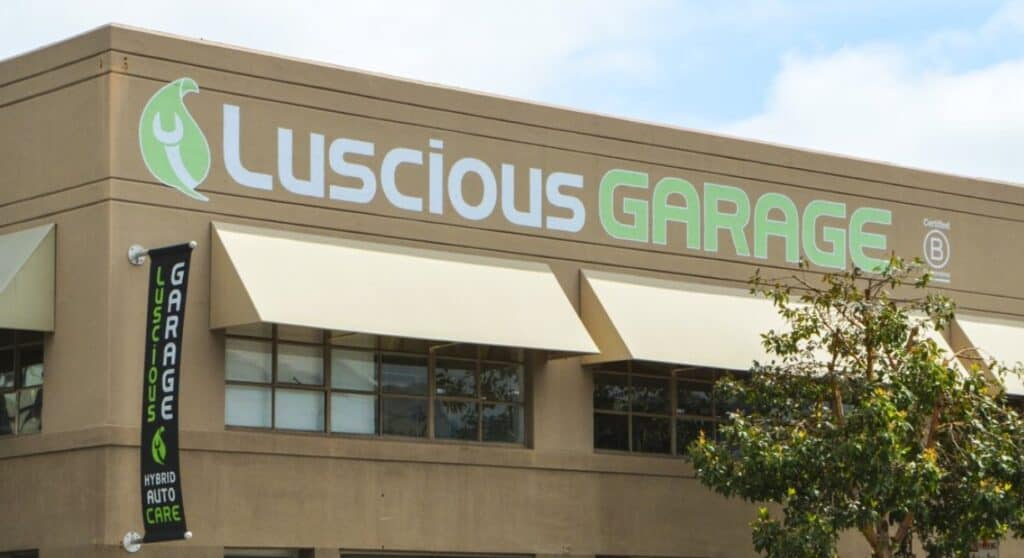
As you venture off-grid in your hybrid or EV, you may rightfully think “how can I take advantage of the gigantic battery I brought with me?”
The short answer is: you can, but you are limited in how much power you can consume at any given time.
Why?
Hybrids and EVs have high voltage batteries, with chemical energy to power stuff (like the car!). Hybrid batteries are typically smaller in capacity by nature of the fact that hybrids, unlike EVs, are also equipped with internal combustion engines, fuelled by a gas tank. EV batteries have much more capacity than hybrids. No matter their size, the batteries are high voltage, often 200v (like a common Prius) to 350-400v (Teslas and Chevy Bolts). Voltage varies by model and can sometimes be much higher.
Batteries produce direct current (DC) when connected to a circuit. To run a device on that circuit (like camp lights or an electric kettle), it has to be designed to run on the voltage and current type of that circuit.
While your high voltage battery could, hypothetically, be employed to run such a device, the complications are:
- That device would need to be designed to run on direct current (DC) at the high voltage of your hybrid or EV (whatever that happens to be).
- High voltage is dangerous, so your car doesn’t come with ready access to it (like a cigarette lighter) and it’s dangerous to bypass the car’s control systems to access it yourself. Likewise electric kettles and camp lights simply aren’t made to run on that voltage either, or else it would be dangerous to use them too.
Upshot: running stuff directly off your high voltage battery isn’t advisable, and devices to do so aren’t available for exactly that reason.
What you can do is what RV campers have done for decades: run electrical stuff off the so-called “low voltage” battery. All hybrids and EVs have low voltage batteries in addition to high voltage batteries, to run all the other stuff on the car, and to do it safely (see prior point). High voltage is reserved for very specific, carefully controlled uses (powertrain, HVAC) and low voltage is used for the rest.
On cars the low voltage battery is typically 12 volts. For camping (or any kind of added use) you have two options:
- Buy devices designed for 12v DC. This includes stuff that plugs into “cigarette lighter” type sockets.
- Install an inverter that uses the 12v DC and converts it to 110v alternating current (AC), the same stuff (for the same devices) that you use at home.
In both of these cases, whatever you connect to the 12v system (whether a device that runs directly on 12v or the inverter), it will need the 12v system to maintain its power, meaning that the 12v battery needs to be continually charging, from the car, in order not to drain down.
On hybrid cars, that state is typically known as “ready”. You leave the car in “ready” mode and it will charge the 12v battery using the high voltage battery (through what’s called a DC-to-DC-converter, already equipped onboard), and the car will automatically start the engine to recharge the high voltage battery as necessary.
On EVs, the terms under which the car stays “on” (what Tesla calls “awake”) are more variable and sometimes hard to tell. Refer to your owner’s manual. Tesla has a “Camp Mode” which will keep the car awake and the auxiliary sockets powered, even if they don’t have anything plugged into them yet.
So long as the EV is on you can apply additional loads for fun camping stuff without draining the 12v battery. You will be draining the high voltage battery (reducing your range) but the amount you lose will be relatively small compared to when you drive the car.
Here are examples of each approach for the most popular hybrids (Prius) and EVs (Tesla).
On Prius:
Prius have multiple auxiliary plugs in locations depending on your model. Each of these “cigarette lighter” style plugs are limited to 15 amps (at 12v DC). Whatever device you plug into them cannot pull more than 15 amps max without blowing the fuse.
If you use an inverter in one of these plugs, it cannot exceed 180 watts without potentially blowing the fuse. (200W inverters are common, and you can probably get away with them, but they will blow the fuse at max load when the car is ready off.)
To be safe, use at 150W inverter, such as this: https://a.co/d/11QBkl2
To bypass the limits of the auxiliary plugs, you can also connect a device directly at the 12v battery.
The Prius can charge its 12v battery with a maximum current of 100 amps (ready on). If you exceed this amount of load the 12v battery will drain and ultimately run out of charge. This includes whatever you may connect in addition to the car’s normal load (like headlights and radio etc.). 100 amps at 12v DC is equal to roughly 1200 watts (not accounting for efficiency losses).
If you want to use home devices (that run on 110v AC), the maximum power output of the car remains 1200 watts. Connecting a 1200W inverter directly to the 12v battery, it will convert to 110v AC with a maximum supply of 11 amps. For reference, a refrigerator normally pulls between 3-6 amps at 110v AC. Just refer to the watts on any device and add them up to determine what you can run at the same time.
Here’s a good example of a 1200W inverter that connects directly at the 12v battery: https://a.co/d/bhO7uVm
Whatever you want to connect directly to the 12v battery, Earthling Automotive can help install it for you in a secure and safe way, making sure the connections are tight, the wires are the correct gauge, and the circuits are properly fused to avoid a fire. This is ideal if you plan to run multiple devices at higher loads (i.e. not just charge your phone).
An exception: special Prius inverters that can connect to the HV battery
Given the popularity of the Prius and the relative ease (for a professional) to access the HV battery, some companies have created special inverters that can connect to the HV battery despite the potential danger. This is meant to save energy, so you don’t have to convert the Prius’s high voltage DC to low voltage DC to 110 volts AC. Instead these inverters remove a step, simply converting the Prius’s high voltage DC to 110 volts AC. More information:
http://techno-fandom.org/~hobbit/cars/plugout/
As far as we know, none of these companies is currently selling any new product. If you do come across one, Earthling is happy to install or service it. If you learn of new options feel free to email us and we will update this blog.
Tesla – First, what low voltage battery do you have?
Start by determining if your Tesla has a lead-acid or lithium-ion low voltage battery: check the “Additional Vehicle Information” screen in center display. If it says “Lithium-ion” for the low voltage battery type, you have a lithium-ion battery. If it says “Lead-Acid”, you have a lead-acid battery.
Here’s how to navigate to that information:
- On the bottom left of the center touchscreen, tap the car icon.
- Select the “Software” option.
- Look for and select “Additional Vehicle Information”.
- Check the battery type: The screen will display the low voltage battery type, either Lithium-ion or Lead-Acid.
Alternatively, you can use the approximate production date as a guide:
- Lead-acid: If your Tesla was manufactured before approximately October 2020 (for Gigafactory Shanghai) or December 2021 (for Fremont Factory), it’s likely to have a lead-acid low voltage battery.
- Lithium-ion: If your Tesla was manufactured after those dates, it’s more likely (but not guaranteed) to have a lithium-ion low voltage battery.
On Tesla with standard 12v batteries:
Teslas have auxiliary plugs in various places depending on the model, just like Prius. Prior to 2021 all of these plugs were supplied by a standard 12v battery system. The limitations of this setup were nearly identical to the previous section on Prius, with 12 amp standard, 16 amp maximum recommended load at any individual power socket.
Later model Tesla do not have regular fuses that “blow”, they have electronic fuses that will trip upon excessive current, opening the circuit and disabling the socket. Lower the load and wait some time for the e-fuse to reset.
Here are a couple interesting videos on loading the 12v circuits on Teslas. In the second link, at the 21:30 time mark, he shows how he connected his larger inverter (bypassing the sockets) under the rear seat at terminals for the car’s onboard DC/DC converter.
Tesla hack: TESTING MAX POWER of 12V socket.
Tesla Model Y Power Inverter – Boiling Water
The second video shows also demonstrates a 1000W inverter, rather than a 1200W inverter (linked previously). Here’s a good example of a 1000W inverter: https://a.co/d/6glESNm
Earthling can install this for you, in the rear of the car (as shown in the video) or in the frunk, directly at the 12v battery.
On Tesla with Lithium Ion 16v batteries:
Beginning in 2021 Tesla introduced Lithium Ion low voltage batteries, replacing the lead acid ones (standard to cars for 100 years). These offer less weight and presumably more longevity. As a result the nominal voltage of the low voltage system becomes 16v instead of 12v.
If your Tesla is equipped with a Lithium Ion low voltage battery, you cannot attach load directly to the battery like you could with Lead Acid. The car is too sensitive and will set alerts.
Therefore all added loads need to be through the factory supplied auxiliary outlets. Fortunately these are still adequate for cool things like the Model Y trunk fridge: https://teslafridge.com/
That can connect to the aux socket located in the trunk.
Anything you do connect needs to be rated for voltage up to 17 volts. Typical operating ranges you will see are 12-17v or 10-17v. Any of these will work; below 17v will not.
Caveat emptor!
Need advice or installation help for modifications on your hybrid or EV? Call or text Earthling Automotive at 415-875-9030
